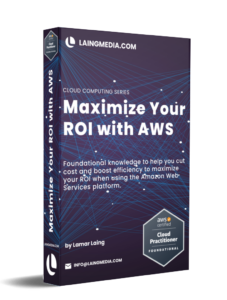Numbers don’t lie. In fact, numbers and data drive many of the business decisions across departments. When it comes to gathering numbers and information to help track what works or is not working, web analytics is one of the first places to collect this information for a business. Tracking web analytics allows companies to see how effective marketing campaigns have been, find problems in online services, and identify areas for improvement. By observing audience behaviors, you can create customer profiles to boost the profitability of advertisement and sales efforts.
However, the idea of tracking, analyzing, and reporting web data can seem like a daunting task for those that are not professional analysts. Laing Media is well-versed in all areas of analytics and understands the importance of showing clients how analytics work and impact their business goals.
What is Web Analytics?
Web analytics is the window into website data through the process of collecting, reporting, and analyzing. Businesses can tailor web analytics precisely to align with business goals and areas of focus. Collecting and analyzing user behavior on your website can provide insight on location, page activity, engagement, and actions the user took while on your site (i.e., joining a waiting list, membership sign up, blog comments). Ultimately, tracking your website analytics can improve the user experience, increase sales and help businesses flourish.
Identify Which Marketing Sources Generates the Most Revenue
Web analytics can also help identify which marketing sources are generating the most revenue for your business. Understanding information like which search engine or social media platform they used to get there, what landing page they landed on, and which country your customers are from can aid businesses in making better decisions. Getting customers to your page to view your product or service is the first step, but the ultimate goal is to convert that visit into a sale.
Funneling marketing dollars into social media platforms and search engine optimization can be a waste without the proper tools to monitor and track the analytics on your website. With web analytics, businesses can identify what works – and doesn’t work – for their customers and channel their resources accordingly. For example, if most customers reach your website through Instagram, consider investing more into content creation and advertising on that platform.
Identify Where You are Losing Customers
The significant benefits of web analytics include tracking how many people visit your website daily and where you are losing potential customers. A website’s objective is for users to interact with the site, visit other pages, and stay on the site as long as possible. If a user visits your sites and immediately leaves, this is considered a ‘bounce’ and will show up in your analytics as the ‘bounce rate.’ Search Engine Journal refers to bounce rates as “the percentage of visitors that leave (or “bounce” back to the search results or referring website) after viewing only one page on your website.”
A high bounce rate can indicate the following:
- The user didn’t feel that content was for them
- The content didn’t match well with the search query
- An overall weak user experience
It’s hard to expect a website to produce quality leads, sales, or any other conversions related to your business with a high bounce rate. By tracking bounce rates, companies can improve the website user experience and help leads move further through their buying journey, increasing profitability. Additionally, tracking different exit pages (last page viewed by a visitor on your site) from your website analytics can identify the worse performing pages on your site.
Improve Conversion Rate Optimization
Conversion Rate Optimization (CRO) is the practice of increasing users who complete the desired action on your website. The goal with CRO is to make website visitors take specific actions. Only through a bird’s eye view and the utilization of web analytics on your website can you improve conversion optimization. Conversion rates are calculated as the number of completed goals divided by the number of visitors. Several types of conversions can be measured on your website depending on your specific business goals and objectives. A few conversions to consider are:
- Newsletter sign ups
- Video views
- Shares on social media
- Event registration
Web analytics can allow businesses to improve website profitability and increase their return on investment. To be effective, companies need to go beyond getting visitors to the website, track web analytics, and create CRO strategies to increase the website’s performance.
Investing in Professional Web Analytics
It’s clear why more businesses are moving to understand and track their web analytics, and your business shouldn’t be left behind. Our team at Laing Media understands how to manage and leverage data to drive businesses into the future and take your business to the next level. If you are looking to gain a deeper understanding of your web analytics or seeking professional help in monitoring, tracking, and maintaining these tools, consider hiring an experienced data analyst to handle your web analytics.

Social Listening: The Powerful Source For Information
Having access to real-time information and data is instrumental for business success. Understanding what audience behaviors, patterns, activities, and even social conversations look like at any moment can help businesses make intelligent decisions. However, since the...
Top Web Design Trends of 2021
Keeping an eye on the ever-changing web design industry can carry crucial information for business owners and anyone in the web design industry alike. When building a website, web designers are in an exciting position to create a design that brings their client's...
5 Social Media Marketing Misconceptions
Don’t let these misconceptions about social media marketing hold you back from growing your online presence.
Talk to an expert.
For more information on Google Analytics and Laing Media’s digital marketing services






